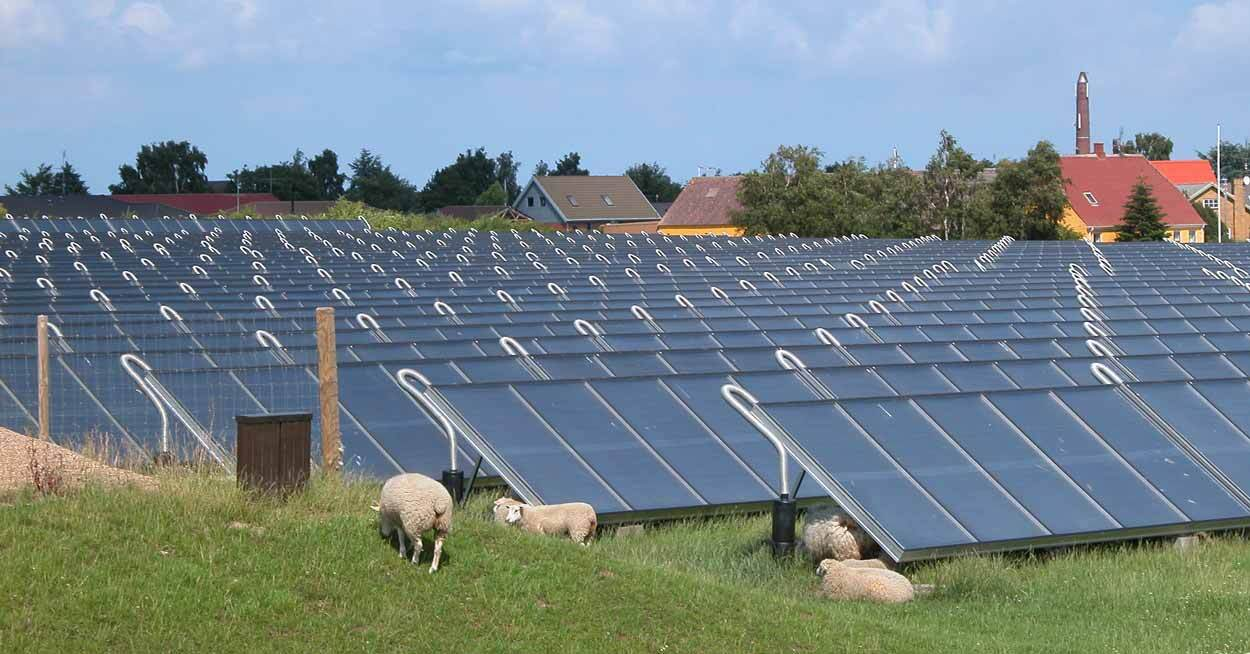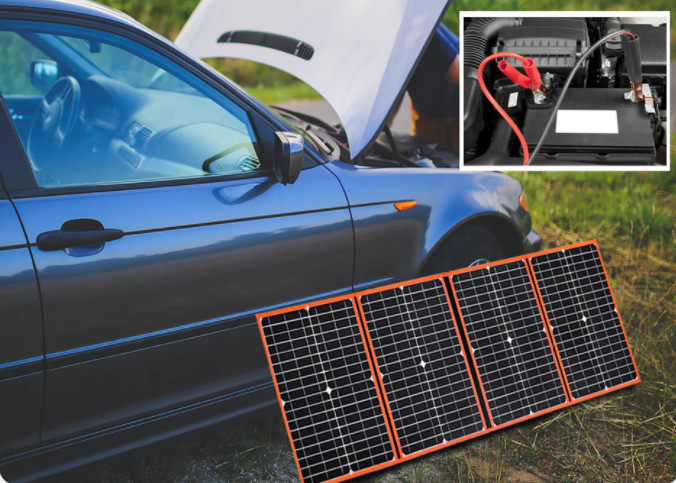1 | Solar Windows
Solar windows are a developing technology that could soon allow you to convert the sunlight that comes through your windows into electricity to power your home. This technology uses a photovoltaic glaze that has the ability to capture solar energy while keeping your windows transparent. The coating contains the world’s smallest solar cells – less than ¼ the size of a grain of rice. There is no need to install new windows, all you need to do is apply it to the surface of the glass.
Solar windows have limitless potential “the US alone is estimated to have between five and seven billion square metres of glass surface.” Imagine the amount of renewable energy we could generate if just a fraction of those surfaces utilized solar glaze! As more and more cities start to strive for net zero climate goals, solar windows could be a game changer. While this technology is still in its infancy, many companies like Solar Window Technologies and Ubiquitous Energy are hoping to roll out their product to consumers in the near future.
2 | Solar Balloons
Even in the sunniest places on earth, clouds can still pass overhead and interrupt solar energy production. Scientists are developing balloons that will literally carry solar panels above the clouds. Researchers at the University of Tokyo are working on creating high altitude balloons capable of holding large solar panels. These balloons will be able to float around 12.5 miles above the ground- above most cloud formations.
While the technology for these balloons isn’t too far off from commercial production, there are still a few hurdles to jump through. The main problem is that these balloons will likely be costly, but there are a few safety concerns. Solar balloons would be flying at altitudes where they may cause a risk to air traffic. Additionally, if the balloons malfunction and crash, they could put people on the ground at risk. Still, if done right, these balloons could be a game changer for solar generated power in places where there is a lot of cloud cover.
3 | Hairy Solar Panels
No, these solar panels won’t clog up your shower. Hairy solar panel technology uses nanotechnology; tiny light-absorbing nanowires on a carbon-nanotube fabric. These nanowires, although much much smaller than the width of a human hair, can absorb more energy than silicon cells (used on typical solar panels). In fact, hairy solar panels can absorb as much as 96% of the solar light that shines their way. This high efficiency technology also has more structural flexibility than traditional solar panels, making it easier and more affordable to place in a variety of situations.
Hairy solar panels have yet to hit the market, but when they do, many opportunities await. For example, hairy solar panels could make electric vehicles capable of harvesting solar power and replace less efficient solar panels on roofs. Due to their flexibility, they could even be placed all over large buildings and monuments. The biggest limitation for this developing technology is durability. Hairy solar panels are not as strong nor long-lasting as normal solar panels.
4 | Thin-Film Solar
These budget-friendly solar panels are not only conveniently thin and flexible, they’re the easiest and fastest to make. Thin-film solar panels are made up of many extremely thin (less than the width of a human hair!) electricity producing layers. Because they are so flexible, they can be made and conveniently shipped out in rolls making them easy to move and distribute.
While somewhat less efficient than traditional solar panels, thin-film solar panels make up for it in ease of manufacturing, flexibility, and affordability. Thin-film solar panels have the potential to make solar energy accessible to many more people and thus reduce our collective carbon footprint.
5 | Floating Solar Farms
Formally known as floating photovoltaic systems, floating solar farms are essentially groups of solar panels installed on the surface of a body of water. You can install Floating solar farms on lakes, reservoirs, ponds, and even the ocean. The main benefit of floating solar farms is that they save space on land. This is particularly important in agricultural areas and cities where land is scarce and precious.
However, solar panel farms don’t just save space, they have the potential to be extremely beneficial to the environment. According to a study in Nature.com, if 10% of the world’s hydropower reservoirs had floating solar panels, we could produce as much electricity as all of the world’s fossil fuel plants. There are already many floating solar panel farms popping up around the globe. From the Heroldsberg Solar Farm in California, to the Dezhou Dingzhuang Floating Solar Farm in China’s Shandong province.
6 | Solar Paint
Can you imagine being able to power your house with a coat of paint? Scientists are developing three different kinds of paint that may one day generate energy from the sun:
Solar paint generating hydrogen
This type of paint absorbs moisture from the air and uses solar energy to break water down into hydrogen and oxygen. Now that hydrogen is separated, it can be used to generate clean energy power. Pretty amazing stuff!
Photovoltaic paint
Photovoltaic paint uses “Quantum dots,” which are essentially tiny semiconductors to capture light and convert it to energy. In theory, we could put quantum dots in paint for walls, roofs, and other surfaces.
Perovskite paint
Also known as spray-on solar cells, perovskite paint is a developing solar energy material that uses something called perovskites. Perovskite, a material derived from titanium oxide minerals, can create solar cells with the ability to take liquid form. Although still in a very early stage of development, scientists have been able to apply these solar cells to a surface using a liquid spray. In the future, these cells might help make solar paint.
While one of the less developed technologies on this list, the mere idea of solar paint is exciting. If made into a reliable solar material, we could see solar painted buildings, vehicles, and even roads.
7 | Wasted- Light Solar Panels
Wasted-light solar panels, or infrared spectrum solar panels are solar panels that have the ability to absorb non-visible light. Sunlight is actually “made up of many different wavelengths across the electromagnetic spectrum.” However, only around 40% of this light is visible to the human eye- the majority of solar panels only utilize this visible light. This leaves much of the light from the rest of the spectrum untapped. There is research into a couple different types of solar panels that could utilize some of the rest of the light spectrum:
Ultraviolet Light
Approximately 4% of the light that reaches Earth is ultraviolet. Because this is such a small amount compared to visible light it isn’t exactly practical to have a UV- light only solar panel- on Earth at least. However, UV- only solar panels have already been developed in Japan and could actually be used on the moon, where ultraviolet light is abundant.
Infrared Light
While some 50% of the light that reaches Earth is infrared light, it contains a lot less energy per capita than visible light. However, “Every night, heat escapes the earth in the form of infrared radiation in order to keep the planet at a constant temperature.” Scientists are in the process of developing a type of solar panel- in the shape of an antennae- that can capture infrared light. This would mean that we could capture solar energy to be converted into electricity even in the dark of night!
8 | Space-Based Solar
The most out of this world solar innovation could come sooner than you might think. Scientists have been developing space-based solar panels that could solve some of our climate woes. Soon, solar panel equipped satellites could launch into space to collect massive amounts of solar radiation and literally beam it back to earth through microwave rays or laser beams.
For more information, please click here: https://isolarparts.com
Twitter: Solarparts Instagram: Solarparts
Tumblr: Solarparts Pinterest: Solarparts
Facebook: Shenzhen Solarparts Inc
Email address: Philip@isolarparts.com






